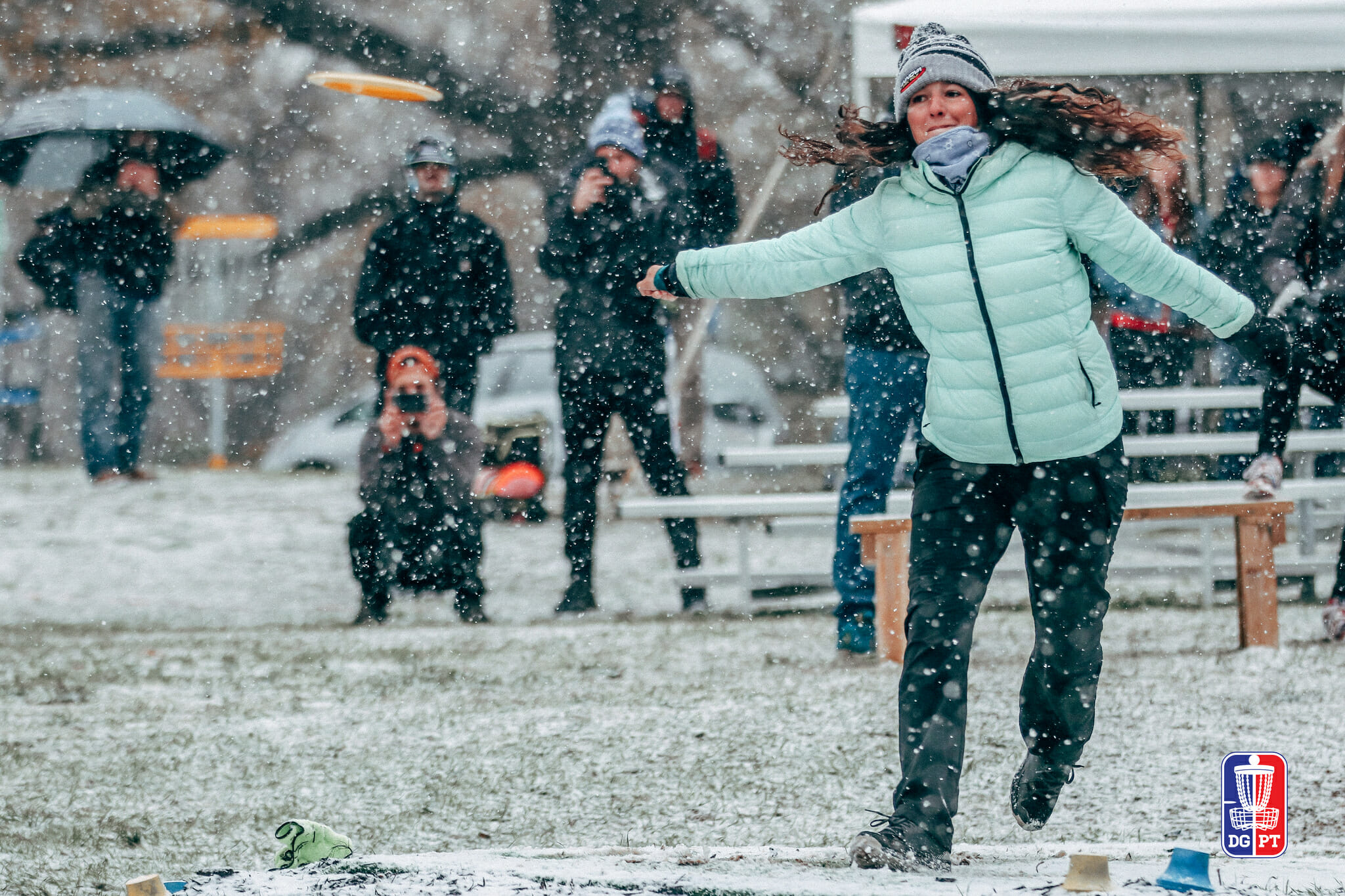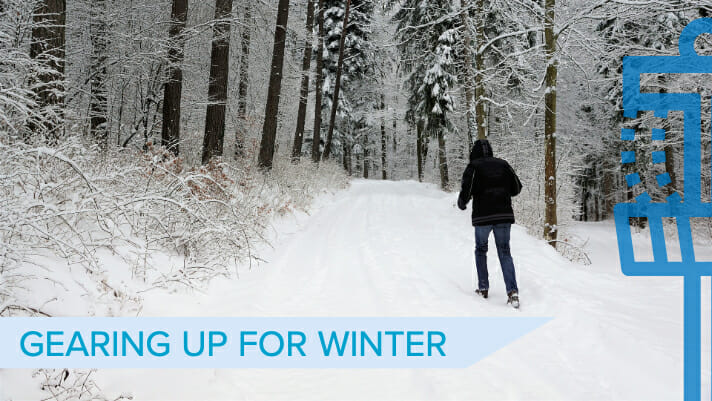Lightweight is the right weight
January 8, 2019 by James Bress in Gear, Instruction with 0 comments
If you’re considering taking my advice and using winter as a training ground, you have to make sure you’re prepared for the elements. As a high school teacher who stubbornly insists that every single daylight hour of winter break should be spent outside playing, I’ve had ample opportunity for trial and error with the best winter gear. My tip for today: Lightweight is the right weight.
Let’s start from the ground up. First, I have found that hiking boots are perfectly fine for snow golf; a little beefier than my normal disc golf sneakers, but not clunky or heavy like a pair of full-on snow boots. Some people stress whether their boots are waterproof, but I’ve never found footwear that could live up to that promise. Instead, I’ve got some thick Smartwool socks to keep me warm and some calf-high gaiters to keep my pants dry. Talk about traction all you want, but if your throwing form is balanced so should you be, even on snow. The socks and the gaiters are more important than the shoes as far as I’m concerned.
In terms of pants, I just wear run-of-the-mill hiking pants, or these Patagonia performance jeans. The important thing is actually what’s under them: some kind of breathable wool or synthetic tights. I prefer Patagonia’s Capilene fabric. In short, your pants may get wet but your legs will stay warm while still allowing freedom of movement not offered by bulkier snow pants. For just a couple hours out in the snow, that’s all I need.
I also wear base layer Capilene shirts. You may be noticing a theme; what can I say, it’s expensive but they make the best and it will last. They are thin, breathable, and stay tight to your body in a way that won’t impede your swing. On top of that, try a Nano-Puff jacket or some other super lightweight, snug jacket. For a half a day out in the woods, moving around pretty consistently, that should be enough to keep you comfortably warm. At our winter Team Challenge matches the lunch in between rounds is often served and eaten outdoors. For that hour or so of standing around I’ll often throw on a heavier coat to hold the heat in, but as soon as I’m moving again it’s back down to my most unrestrictive options.

Hats are hats and neck warmers are neck warmers, and there’s not much to be said about those except that you should definitely have them. It’s gloves that are important. More specifically, mittens. Mittens will hold the heat better than gloves as there is less surface area that can get wet and freeze, and they are easier to get on and off in between shots. Hand warmers feel nice on the skin, but to keep the blood in your veins warm you need to keep your hands covered.
A final, somewhat gear-related tip: your body does a lot of extra work to stay warm during winter. Reward it by consuming more calories and drinking more water than you normally would. My beef jerky consumption goes way up in winter. When it comes to water, don’t trust any containers with a tube. Instead, get a wide-mouth bottle with a deep cap and, when the temperatures dip to the “for the love of god what are we even doing out here!?” range, don’t screw it down all the way or you won’t get a sip out of it until you’ve thawed out back home.
Don’t hide from winter, embrace it! The course will be empty and all the skinny lines are fat. If nothing else, just remember, “start warm, stay warm.”
Oh, and one more thing while I’m here: always shovel the tee pads.
